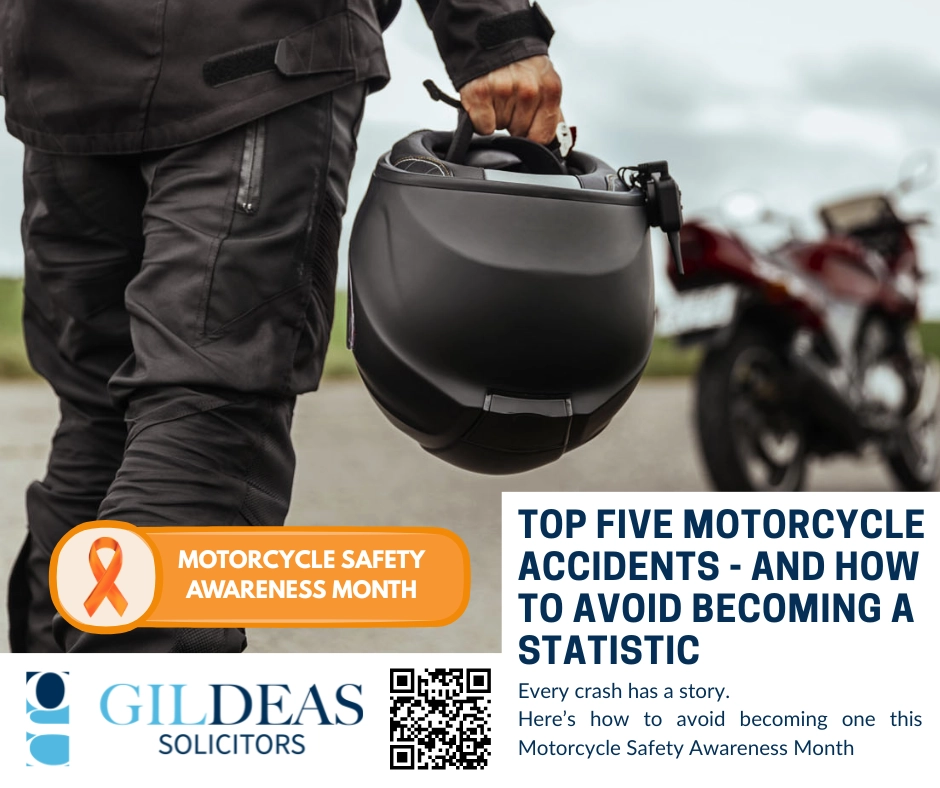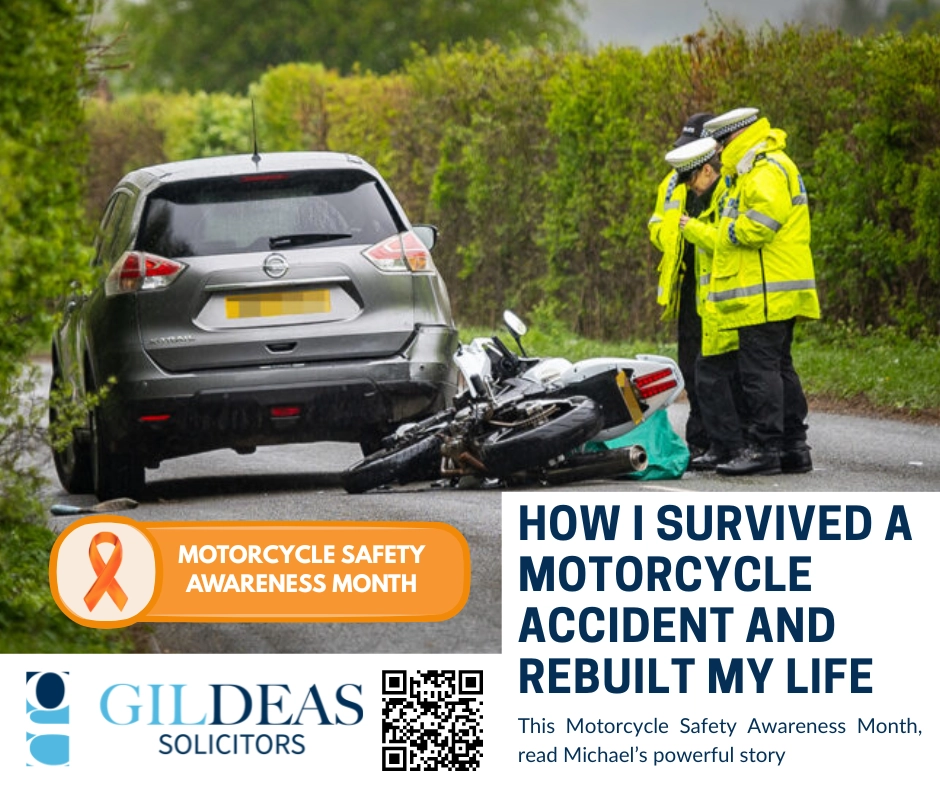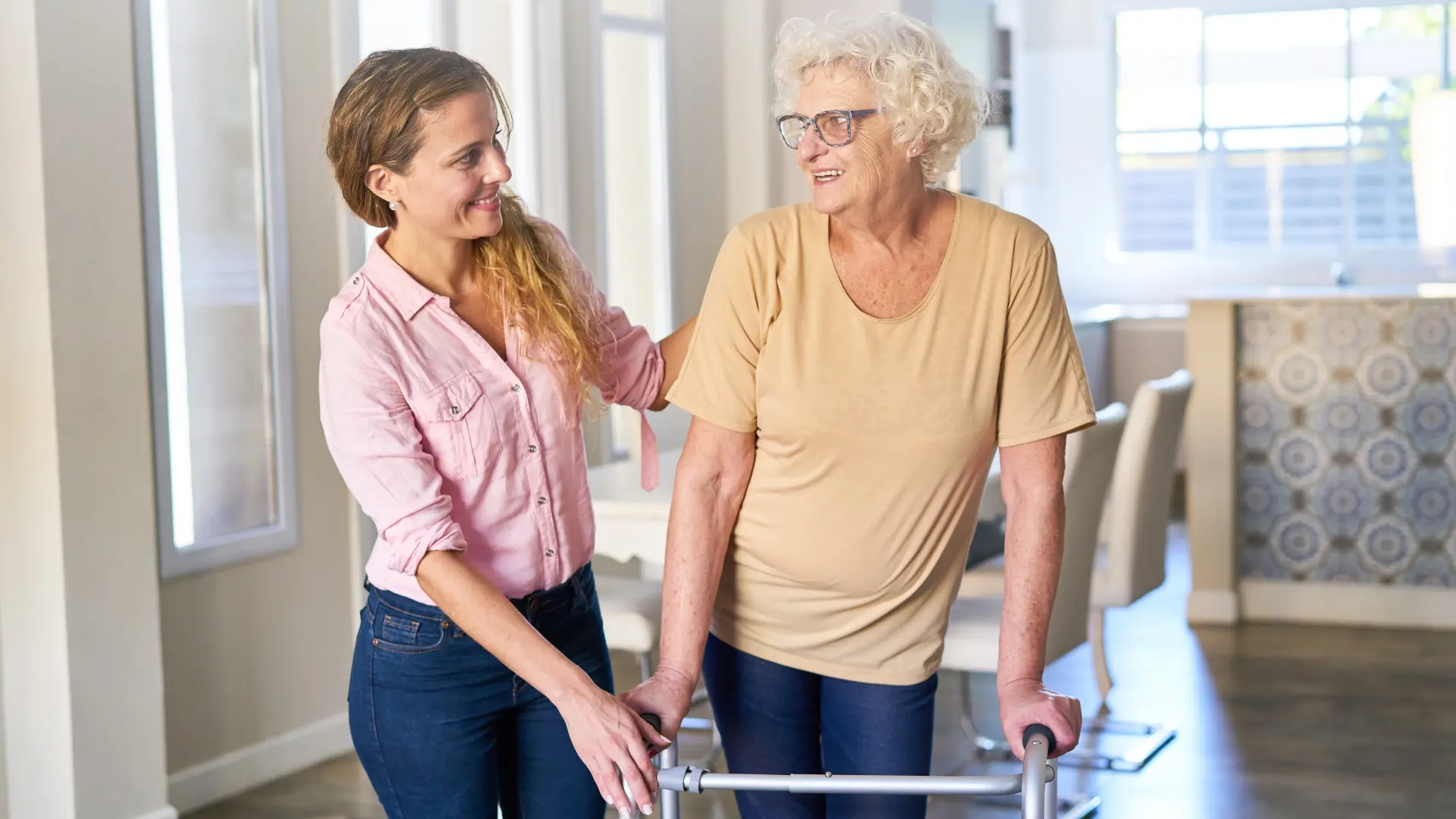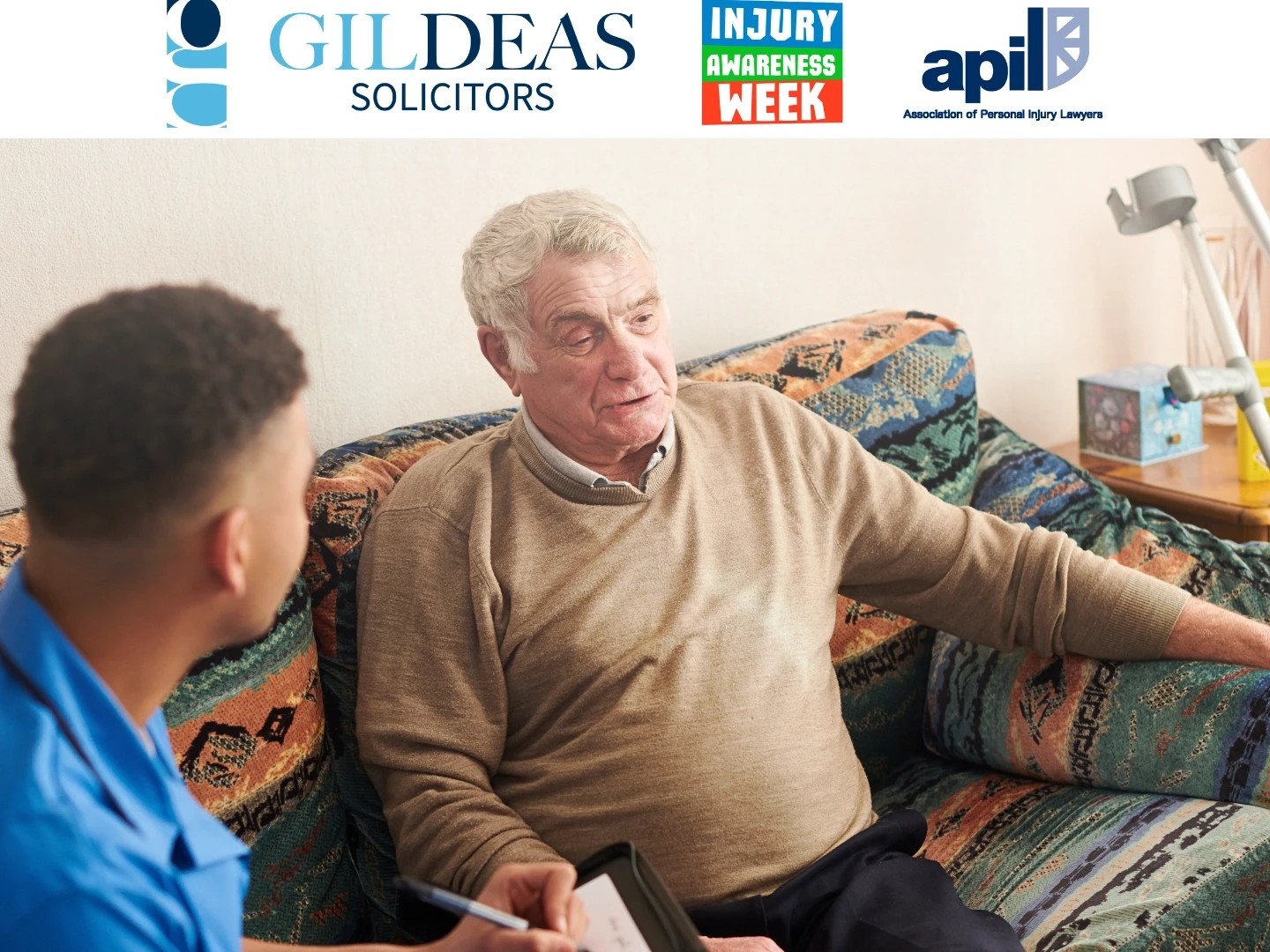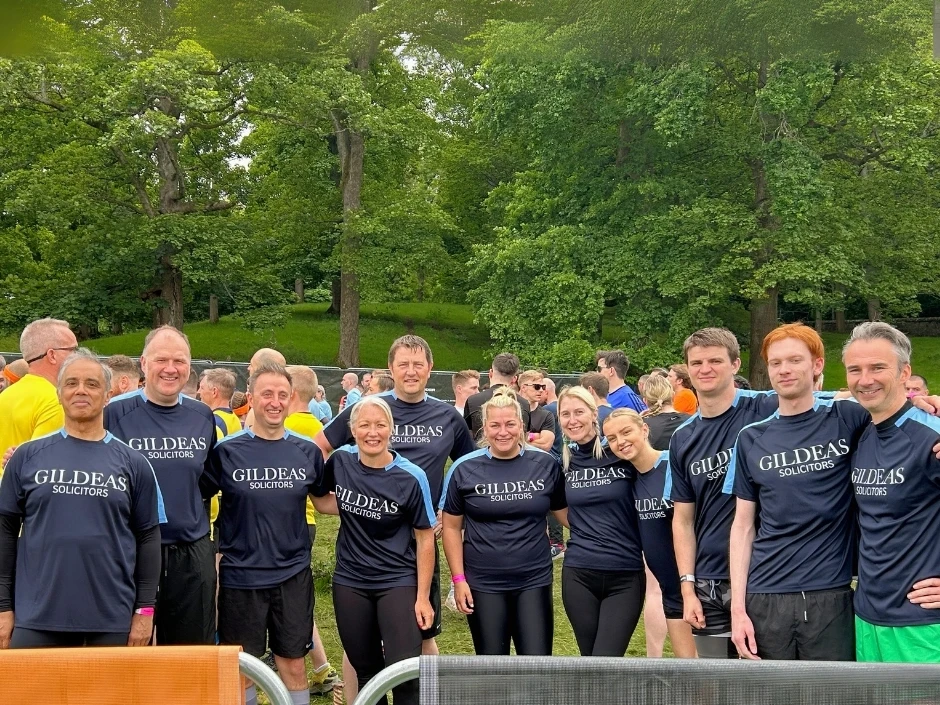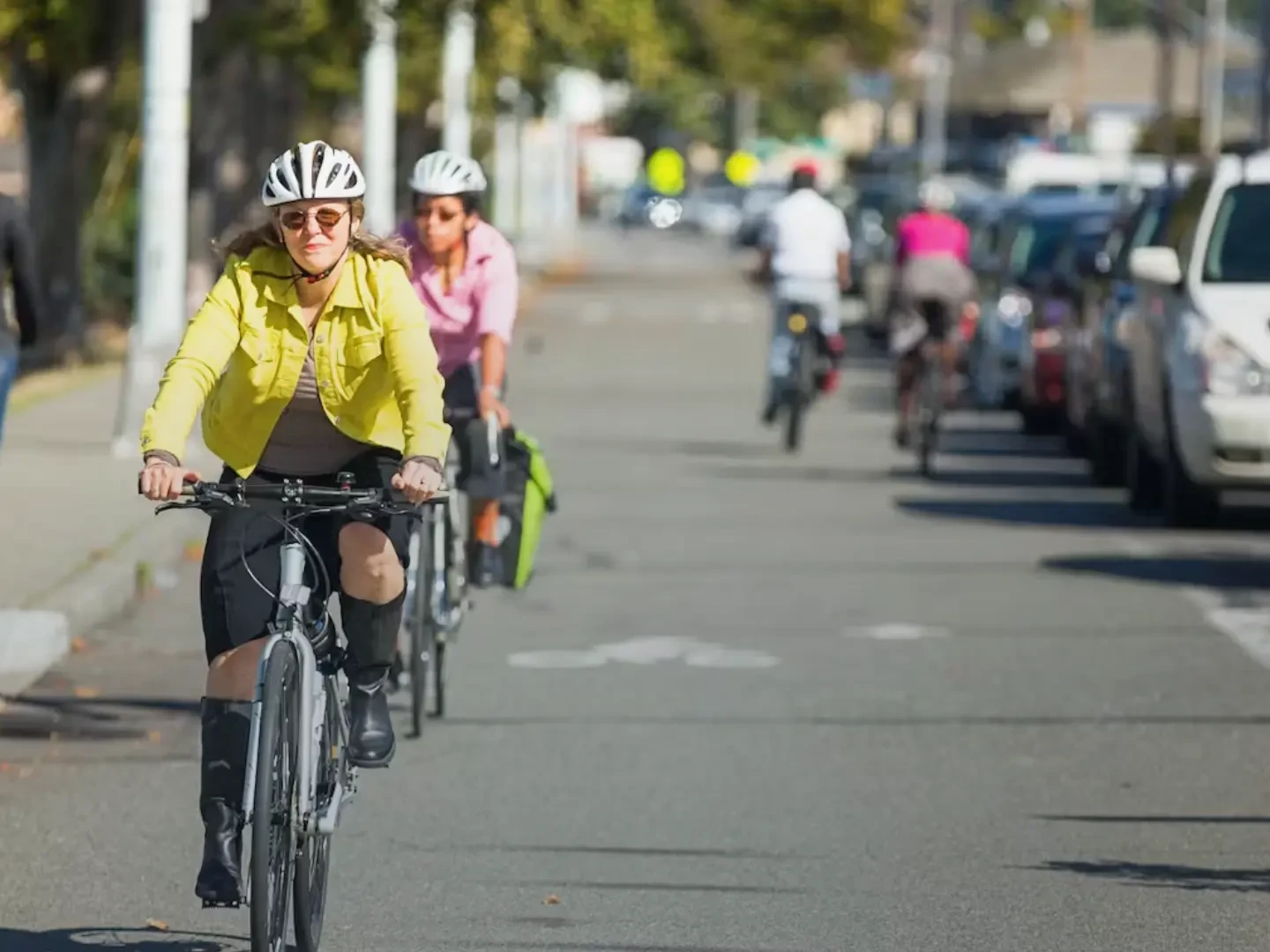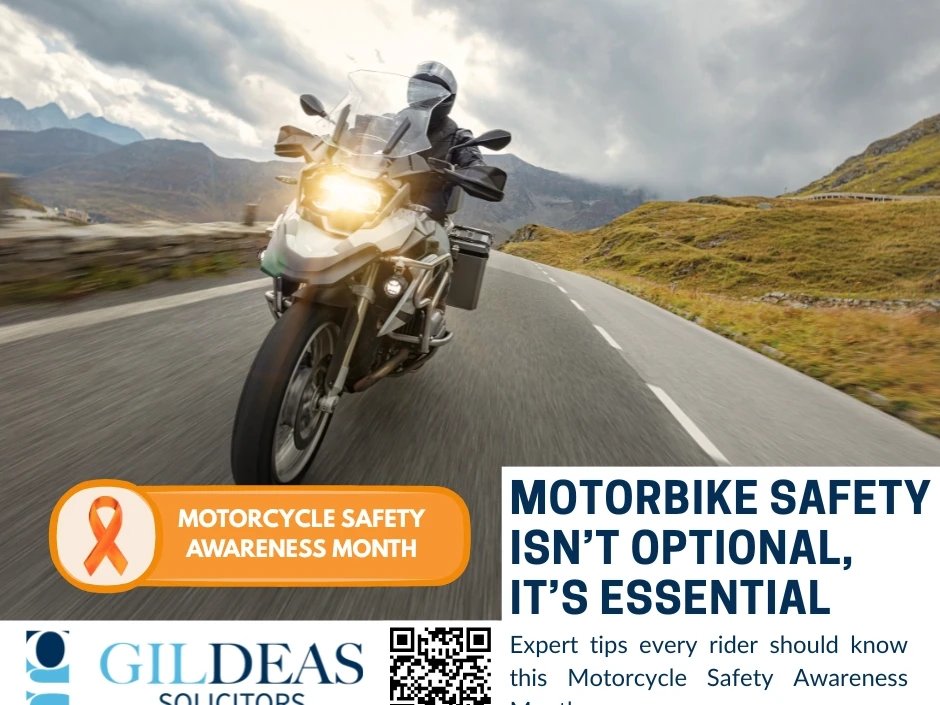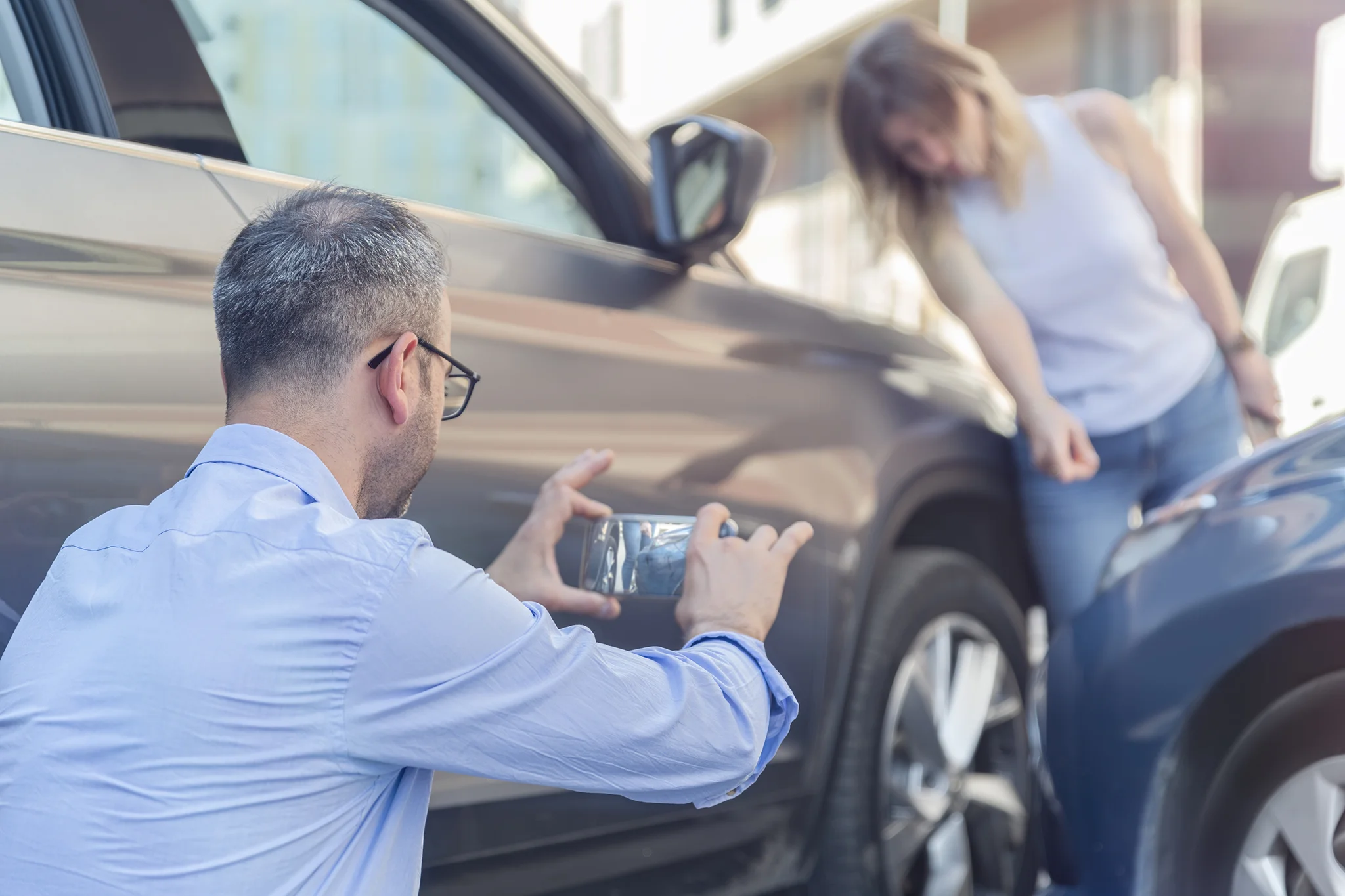Top 5 Motorcycle Accidents - And How To Avoid Becoming A Statistic
Motorcycle Safety Awareness Month 2025 is a timely reminder that, while the thrill of the open road is part of what makes motorcycling so appealing, the risks are very real, especially here in Scotland.
According to a recent report by Police Scotland, there were 269 motorcycle accidents resulting in deaths between 2015 and 2024. Alarmingly, motorcyclists represent 18% of all road fatalities, despite making up less than 1% of all traffic.
The majority of those killed were men aged 46 to 55, and the most common causes were cornering on left hand bends and overtaking. These are not just statistics. They are people, riders, fathers, husbands, brothers.
At Gildeas Solicitors, we’ve worked with countless motorcyclists and their families after life-changing collisions. Here, we explore the five most common types of motorcycle accidents in Scotland and how to avoid becoming one of the numbers.
1. Cornering on left-hand bends
Why it happens:
Tight rural bends, poor visibility, gravel, wet surfaces. These are common hazards across Scotland, particularly in areas like the Highlands, Argyll and Bute, and the Borders, where many of the country’s fatal motorbike crashes occur.
How to avoid it:
- Slow down before entering the bend, not while you are in it
- Position correctly to improve your line of sight
- Look ahead, not down
- Don’t let adrenaline override judgement
2. Overtaking gone wrong
Why it happens:
Impatience, misjudging distance or speed, and limited visibility on narrow Scottish roads can all lead to catastrophic outcomes when overtaking.
How to avoid it:
- Only overtake when absolutely safe and legal
- Avoid overtaking near junctions or bends
- Use your headlights and horn when appropriate to increase visibility
3. Loss of control
Why it happens:
From poor road surfaces to sudden weather changes, many riders lose control due to unpredictable conditions, particularly in remote or rural parts of Scotland.
How to avoid it:
- Keep your bike well maintained, especially tyres and brakes
- Attend a rider refinement course or refresher training such as those provided by RoSPA
- Adjust your speed and riding style to suit the road and weather
4. Failure to be seen
Why it happens:
Motorcyclists are easy to miss, particularly in a car's blind spot or at junctions. As more bikers take to the roads between spring and autumn, this becomes a bigger issue.
How to avoid it:
- Wear high visibility clothing
- Always use your headlights, even during the day
- Avoid sitting in a driver’s blind spot for extended periods
5. Cars pulling out of junctions
Why it happens:
One of the most common and devastating scenarios is a car pulling out into the path of a motorcycle because the driver “did not see them.”
How to avoid it:
- Slow down when approaching junctions
- Make yourself more visible by weaving slightly in your lane
- Always be ready to brake or swerve defensively
What do Police Scotland say on motorcycle accidents?
Chief Superintendent Hilary Sloan, Head of Road Policing, stated:
“Motorcyclists are one of the most vulnerable road users. Cornering left hand bends and overtaking are the most common collision types. We do not want motorcyclists to die on Scotland’s roads. The reality is people are dying and we need people to take action.”
Police Scotland’s campaign is a call for all road users to take responsibility. But as motorcyclists, the onus is on us to ride smarter, safer, and more defensively, especially during peak riding months.
If the worst happens, we're here
Even with the best preparation, accidents happen. When they do, Gildeas Solicitors are here to help. We specialise in representing motorcyclists involved in serious road traffic accidents, offering:
- Expert legal advice.
- Access to medical and rehabilitation specialists.
- Support with adapted vehicles, property and equipment.
- Pursuit of maximum compensation to cover loss of income, care costs, and more.
We understand bikers, and we know the devastating impact a collision can have, not only physically, but emotionally and financially. If you’ve been injured, or someone you love has, don’t face it alone.
Take action this Motorbike Safety Awareness Month
Use this month to check your gear, sharpen your riding habits, and remind yourself of the risks.
Share this blog with fellow riders and play your part in reducing motorcycle deaths in Scotland.
Need Legal Advice After a Motorbike Accident?
If you or someone you know has been involved in a motorcycle accident, contact Gildeas Solicitors today. We offer expert legal advice tailored to riders and can help you get the compensation and support you deserve.
Gildeas Solicitors is a recognised law firm specialising in personal injury claims, supporting you throughout Scotland from our offices in Glasgow and Edinburgh. We’re passionate about what we do, whilst putting our clients’ interests first. That’s why we make personal injury personal.
Considering our services? Call our dedicated team today on 0141 331 6070.
How I Survived a Motorcycle Accident and Rebuilt My Life: Motorbike Safety Awareness Month
May marks Motorbike Safety Awareness Month. It is a time to reflect on the freedom and risks associated with riding. It is also an opportunity to share real stories that highlight the importance of rider safety and the life-changing consequences of a serious accident.
For Paul Allum, a retired medical physics engineer and lifelong motorbike enthusiast, one ride changed everything. His story is one of survival, recovery, and the critical importance of legal and medical support after a devastating collision.
The Day Everything Changed
In 2023, Paul was in Scotland for a 60th birthday celebration when tragedy struck. A severe motorcycle accident left him with multiple injuries including fractured vertebrae, broken ribs, and numerous breaks in his arms and legs. The injuries were so severe he was placed in an induced coma.
Paul was rushed to the Queen Elizabeth University Hospital in Glasgow, a leading facility for spinal trauma. He remained there for three months receiving intensive care. Sadly, spinal injuries like Paul’s are all too common among motorcyclists, especially when crashes occur at speed or on rural roads.
A Long Road To Recovery
Recovery was far from easy. Paul faced life with complete paralysis from the chest down, along with limited use of his right arm. For anyone, this would be a monumental adjustment. For someone as active and independent as Paul, it was life-altering.
The support of his family and legal team became essential. Director Stephen Hay of Gildeas Solicitors visited Paul in hospital, working closely with both him and his loved ones to ensure everything was in place, including interim financial support and specialist medical assessments.
Adapting To A New Life
Once stable, Paul was moved to a care facility closer to home in the southeast of England. But life would never be the same.
His family home required extensive adaptations. At 6 feet 7, Paul needed a custom wheelchair and specialised equipment for mobility and care. A new accessible home was found with enough space for his family and a live-in carer. Gildeas Solicitors secured interim payments from the third party’s insurer to cover home modifications, a specially adapted van, and long-term care arrangements.
The Value of Legal Support
Thanks to expert handling of his case, Paul received a settlement of £5.9 million. Whilst no amount of money can undo what happened, the compensation provides Paul with financial security, ensuring that his care, housing, transport, and quality of life are protected for the future.
“Stephen assisted at all stages in my recovery,” Paul said. “From arranging experts to helping find a suitable property, to just being there when I needed advice. I’m now looking forward to going home with my family.”
Motorbike Safety: Lessons From Experience
Paul’s story is a sobering reminder of how vulnerable motorcyclists are. According to Police Scotland:
- Motorcyclists make up just 1% of road users in Scotland, but account for approximately 14 percent of all road deaths.
- In 2023, there were 26 motorcycle fatalities. This figure has remained relatively unchanged over the past 30 years, even as fatalities among other road users have decreased.
- The majority of motorcyclist casualties are men, with the most common age range being 46 to 55.
- Loss of control is the most frequent contributory factor in motorcyclist collisions, often occurring in rural areas, particularly on weekends.
We're Here If You Need Us
At Gildeas Solicitors, we specialise in supporting injured motorcyclists and their families through some of the most difficult times in their lives.
If you or someone you know has been involved in a motorcycle accident, speak to our team today. The right legal advice could make all the difference.
Gildeas Solicitors is a recognised law firm specialising in personal injury claims, supporting you throughout Scotland from our offices in Glasgow and Edinburgh. We’re passionate about what we do, whilst putting our clients’ interests first. That’s why we make personal injury personal.
Considering our services? Call our dedicated team today on 0141 331 6070.
Claiming Compensation for Care: What Every Injured Person Needs to Know
If you’ve been injured in an accident, it’s likely you were unwell and needed assistance from a loved one whilst you recovered. Thankfully, the law in Scotland allows relatives to claim compensation for the time they spent assisting you.
Read as we explain how it all works, and how we can help you factor this into your personal injury claim.
What does the law say?
The concept of claiming damages for help from loved ones may seem strange. But if it weren’t for them, we would likely have to hire carers to look after us during our recovery. It’s on this basis that the law provides a way to compensate our loved ones for their assistance.
It’s important to know that this type of compensation cannot be made on its own. It can only be made as part of a personal injury claim by you, the injured person.
A key part of the law
The specific law is called the Administration of Justice (Scotland) Act 1982, making it now over 40 years old. As it was written some time ago, the wording of the law specifies that only help from relatives of the injured person can be claimed for.
This unfortunately means only spouses, civil partners, children, and other family members are included. So, if you received help from a flatmate, neighbour, friend, or someone else unrelated to you, you would be unable to make a services claim.
However, the law is constantly evolving, and in December 2024, recommendations were made to reflect our more modern society and expand the definition to include non-relatives. Hopefully, we’ll see the scope of the law increase in the near future.
What are the two types of services claims?
The law gives us the option to make a claim for two different types of services.
1. Help you received from others
This type of claim is for the care and assistance your loved ones gave you, typically from the day of the accident until you were recovered.
It’s important to know that you can only claim for help given due to your injuries. For example, if you’d broken your leg in an accident and needed assistance getting dressed or doing housework – we could make a claim for this.
But, if you wanted to claim for help with making meals, but your partner is the person who usually cooks in your house – we would not be able to make a claim for this, since it wasn’t impacted by your accident.
Still unsure? Your solicitor will be able to advise what you can and cannot claim for. It’s always best to discuss any queries you have regarding your case with them.
2. Help you would have given to others
This part of the law allows you to claim for the value of services you were providing to a relative but are now unable to due to your accident. This could be for things like gardening, DIY, and home decorating. For example, if you were helping your daughter redecorate a bedroom, we would be able to make a claim for this.
It’s important to know that a services claim only relates to the ‘labour’ part, i.e., the time you would have spent helping out. We cannot make a claim for anything else, e.g., materials.
What are some examples of things included in service claims?
It’s useful to have an idea of what could be included in a services claim. For example:
Domestic and household chores, such as:
- Cooking
- Cleaning, e.g. doing laundry, washing the dishes, etc
- Grocery shopping
Personal care, such as:
- Bathing and showering
- Getting in and out of bed
- Help dressing and undressing
- Washing drying, and styling your hair
- Intimate hygiene needs, such as using the toilet
Other services, such as:
- Childminding
- Looking after pets
- Gardening
- DIY and home maintenance
- Driving. This includes mileage and parking. Again, this would only be for anything related to your injuries. For example, if you needed picked up or dropped off at doctors/hospital appointments.
How is a personal injury services claim worked out?
Services can be one of the more challenging aspects of a claim to determine. After all, how do you place a value on help from your loved ones? The law aims to simplify this in a number of ways.
Generally, most clients recover from their injuries in a few weeks and continue on with their life as normal. In these cases, sometimes the Court will take a “broad brush” approach, meaning services are given a ‘reasonable figure’ and added to the rest of your claim.
Another way services are calculated are at an hourly rate. This is because if it weren’t for your loved ones, you would’ve had to hire a carer to help. A discount rate is applied, since the wage of a hired carer includes factors like National Insurance, etc. For example, if a carer is paid £12 per hour, the discounted rate in a services claim could be approximately £9 per hour.
A major factor in calculating services is how long you needed help for. We would normally expect the amount of care provided to decrease over time as you recover from your injuries. So, when valuing your claim, your solicitor might ask how many hours per week you had help. An example of this could be:
Four week injury:
- Week one: Needed help every day going to the toilet, getting dressed, bathing, going to appointments, and chores: 25 hours
- Week two: Needed help bathing, going to appointments, and chores: 20 hours
- Week three: Needed help going to appointments and chores: 10 hours
- Week four: Needed help going to appointments: 2 hours
Total: 57 hours at £9 per hour, making £513 in total.
This is an example purely for the purpose of this article. Not every case will be as straightforward as the above.
Severe injuries
When injuries are more severe, this can be even more complex to put a value on. For example, if you need an operation, or if you’re unable to have the same quality of life after the accident. Your injuries might mean you need specialist care from the outset, and you may also have long-term ongoing care needs which could increase or decrease over time.
The law provides a way to factor services into the claim alongside specialist help, which your solicitor will discuss with you.
How is a claim for services proved?
Regardless of how minor or severe your injury, your solicitor must back up your claim with evidence. So, we may ask you for medical evidence such as GP or hospital records, or we may get a professional medico-legal expert to meet with you. We may also ask for a witness statement from the person who looked after you. This all proves the severity of your injuries, how long you needed to recover, and how long you needed help for.
When making a claim for help you would have given to others, we may ask for evidence such as bank statements or receipts to prove you were going to carry out the activity. It’s also useful to provide as evidence the ‘going rate’ of labour for whichever activity you were planning to do. For example, if you were going to redecorate your daughter’s house, we may ask for quotes from tradesmen, painter and decorators, cleaning services, etc.
Top tips for claiming compensation for care
There are a number of steps you can take to help your solicitor accurately assess and establish your claim for care.
- Try to keep an accurate record of who is providing care, how long they are providing it for, and what sort of tasks they are doing. We don’t need a full spreadsheet, but any evidence goes a long way when valuing your claim.
- Make sure your solicitor has contact details for all of the people who provided care to you, so they can take formal witness statements from them as evidence.
- Keep a record of any spending whilst you were being looked after and keep receipts/bank statements as evidence. You may find that you have to get in tradesmen to deal with ordinary DIY, gardening, or cleaning tasks, or purchase items to help with your injuries or assist you in getting around the house or getting things done.
- Keep a record of what you find difficult, or impossible, to do and what you require assistance with – no matter how small. A claim for care can be anything from 24-hour private nursing to assistance getting in and out of bed or putting on your socks, and all points in between. If your solicitors have a proper record, and proper evidence to support it, it will be much easier to make sure you get the compensation to which you are entitled.
Conclusion
Claiming compensation for the care and assistance provided by your loved ones following an injury is an essential part of the personal injury process in Scotland.
The Administration of Justice (Scotland) Act 1982 allows for claims related to both the help you received and the help you would have given others, but it’s important to remember that these claims can only be made as part of a wider personal injury case.
The process may be complex, especially when calculating the value of services, but with proper evidence and guidance from a solicitor, you can ensure that all aspects of your recovery are fairly accounted for.
Remember, keeping detailed records of care provided, expenses incurred, and tasks that were impacted by your injury can make a significant difference in securing the compensation you deserve.
Gildeas Solicitors have extensive experience in services claims. If you would like help in connection with a possible personal injury claim, get in touch with us for a chat.
Gildeas Solicitors is a recognised law firm specialising in personal injury claims, supporting you throughout Scotland from our offices in Glasgow and Edinburgh. We’re passionate about what we do, whilst putting our clients’ interests first. That’s why we make personal injury personal.
Considering our services? Call our dedicated team today on 0141 331 6070.
April Fools Day: Lawsuits and Lessons Learned
Workplace banter on April Fools Day is harmless fun most of the time, but there are occasions when a practical joke in the workplace can have serious consequences for both employers and employees.
Read as we detail the workplace pranks which led to legal action and serious injury for which the employer could have been found liable.
What kind of pranks can result in a personal injury claim?
Unfortunately, this is an area that is full of examples, usually involving a ‘prank’ which simply hasn’t been thought through.
In 2017, in Patel v Homerton University Hospital NHS Foundation Trust, a pharmacist took a London hospital to court after she sustained damage to her spine and coccyx when a colleague deliberately pulled her chair out as she sat down.
More recently in 2022, in the case of Mr Chell v Tarmac Cement and Lime Ltd, a contractor was working on a construction site when he became the victim of a practical joke gone wrong. As Mr Chell bent down to pick up a piece of cut steel, a colleague placed two explosive pellets on a bench near his ear, then hit them with a hammer which triggered a loud explosion. Mr Chell ended up suffering from a perforated eardrum, hearing loss and tinnitus.
What do pranks in the workplace mean for employers?
It’s not necessarily the case that an employer would be considered at fault for a workplace prank gone wrong – it will depend on several factors. This will depend on the severity of the incident, and other factors such as the employer’s prior knowledge of their employee’s behaviour.
However, there are some things to consider as an employer. For example, it’s important to ensure that everything is handled well in the aftermath of a workplace prank gone wrong.
As an employer, there are a few things to consider:
- Develop robust policies and guidelines to ensure that all employees are aware of their health and safety obligations and encourage them to look out for the safety and wellbeing of others.
- Quickly address any concerns raised about pranks and ensure any serious workplace incidents involving pranks are reported and properly documented when they occur, as the effects of an incident may not arise straight away.
What does this mean for workplace pranksters?
If you’re the ‘prankster’ of your workplace, we encourage you to properly think through any prank you may have planned. For example, it might be useful to think about all the ways your prank could go wrong and if it could result in injury or emotional repercussions to any other person in your workplace.
We would recommend ensuring that you read through any policies or guidelines your employer might have regarding pranks within your workplace – it could be the fact that pranks are not permitted. If your workplace does not permit pranks, it’s important to understand this and take it on board.
It might also be a good idea to discuss any potential pranks you may have planned with a trusted colleague or even your boss – they should be able to help you gauge whether your prank is safe and suitable for your workplace and colleagues. If your boss is on board, this will reduce your personal exposure to ramifications from a prank gone wrong.
What should I do if I'm the victim of a workplace prank?
April Fool’s Day should be a day of harmless fun and laughter, but it’s important to remember some boundaries should not be crossed. Here are our top tips if you’re injured from a workplace prank:
• Assess the Situation: Evaluate the prank and its potential consequences. Determine if any harm has been caused, whether physical or emotional.
• Communicate Clearly: If you feel comfortable doing so, calmly communicate to the person that their joke has crossed a line. Sometimes, individuals may not realise the impact of their actions until it’s brought to their attention.
• Document the Incident: Record any damage or injuries resulting from the prank. Take photos, gather witness statements if applicable, and keep any relevant communication or evidence.
• Seek Medical Attention if Necessary: Don’t hesitate to seek medical assistance if the prank has caused physical harm or distress. Your health and well-being should always be a top priority.
• Consider Legal Recourse: In serious cases where significant harm or damages have occurred, you may need to consider legal action. Consult with a personal injury solicitor about your options and determine the best course of action.
Conclusion
There’s no reason you can’t have some fun with a prank this April Fools’ Day - unless it’s against an employment policy. But bear in mind to think it through and ensure it’s safe and fun for everyone involved.
Gildeas Solicitors is a recognised law firm specialising in personal injury claims, supporting you throughout Scotland from our offices in Glasgow and Edinburgh. We’re passionate about what we do, whilst putting our clients’ interests first. That’s why we make personal injury personal.
Considering our services? Call our dedicated team today on 0141 331 6070.
How Long Do You Have To Make A Claim? A Simple Guide
When making a personal injury claim, it’s important to get in touch with a solicitor as soon as possible. This not only ensures you have professional representation, but also because the law has specific deadlines for when you are entitled to make a personal injury claim.
Read on as we explain in this helpful guide.
How long after an accident do I have to make a personal injury claim?
The time limit for personal injury claims is typically three years, as set out by the Prescription and Limitation (Scotland) Act 1973. These three years are also known as the ‘limitation period’. Cases which have passed the deadline are often referred to as ‘time-barred’.
The law states you have three years from the ‘date of knowledge’ to begin legal proceedings. The date of knowledge is defined as either the date when the injury occurred, or the date when you became aware of the injury and its cause.
For example, if you were injured in a road traffic accident on January 1st 2025, you typically have until January 1st 2028 to make a claim.
Are there exceptions to the three-year personal injury time limit?
Whilst most claims fall under the three-year rule, there are some circumstances where the law differs.
Industrial diseases
The law makes exceptions for certain types of injuries, for example people exposed to harmful chemicals like asbestos in the workplace. Some industrial diseases such as mesothelioma take many years after the initial exposure to show symptoms. In those cases, the law allows you to make a claim from the date when you first realised your health was impacted. This is called the ‘date of knowledge’.
For example, if you were exposed to asbestos at work but only realised your health was impacted on January 1st 2025, you would have until January 1st 2028 to make a claim.
The correct medical evidence can be crucial in these types of cases. A solicitor will always seek expert medical opinion in the first instance with industrial accidents.
Children
In Scotland, if you are under 16, you are required to have someone else make a claim on your behalf. This person is called a ‘litigation friend’. In Scots law, you are deemed capable of making your own decisions as an adult from the day you turn 16. In personal injury, this means you have three years from your 16th birthday to file a claim.
In practice, this means that any child – whether a baby, 5 years old, or 15 – has until their 19th birthday to make a claim.
Capacity
In some cases, a person may be incapacitated, leaving them unable to manage their personal injury claim themselves. The law makes an exception for such cases, and the three-year limitation period begins once the person regains their capacity.
For example, if a person has a condition temporarily affecting their mental capacity. The law states that the three-year period begins once the person regains their capacity.
Every case is different, and the law has to cover various circumstances. For instance, it provides ways where another person can be legally appointed to look after an incapacitated person’s affairs. This could be via a Guardianship Order or a Power of Attorney. Sometimes, these may be in place before an accident, e.g., if a person has dementia or is in a coma. Under these circumstances, the usual three-year limitation period begins from the date of the accident.
Fatal accidents
When a person passes away, their right to claim is still valid. The law allows the person’s next of kin to have three years from the date of their death to raise a claim for damages.
On the other hand, there may be instances when the next of kin are not notified about a death. The law allows an exception here, so the next of kin have three years from the date they were notified of the death.
Why it’s important to raise a claim as soon as you can
Before taking on a claim, your solicitor wants to be confident it has a reasonable chance of success. The less time there is until the deadline, the less time your solicitor has to investigate, prepare, and negotiate with the other side. If there’s not enough time, it may put pressure on both you and your solicitor, or it may even be too risky to raise a claim at all.
With most cases, obtaining evidence is crucial to proving your case. If your case is close to the deadline, it can cause challenges when trying to obtain witness statements or CCTV footage. For example, witness statements are usually more reliable when they are taken sooner rather than later as people tend to remember more details.
Another factor can be when it comes to defending your position. Raising a claim months or years after the date of your accident could open it up to criticism from the other side’s insurance company. The longer you wait to raise, the more difficult it can be to argue a position.
Most importantly, if you don’t settle your claim by negotiation within the three-year period, you’ll have to raise a court action to keep the claim alive beyond the deadline – or lose the right to claim for good.
Does my claim need to be settled within the time limit?
No, but you need to register your claim with the court within the three years. Depending on the complexity of your case and the severity of your injuries, it might not be possible to settle your claim within three years. But as long as you have registered your case with the court within the time limit, (known as ‘issuing proceedings’) then there’s no need to worry.
Conclusion
As we’ve seen, understanding the law around personal injury time limits can be complex. Most clients have the typical three years to make a personal injury claim, but it’s important to be aware of the exceptional circumstances where the law allows extra time.
Regardless of the circumstances surrounding your accident, it’s important to contact us to raise a claim at the earliest opportunity. This will ensure we can carry out a thorough investigation, increase the chances of obtaining evidence, and minimise criticism from the other side.
Gildeas Solicitors is a recognised law firm specialising in personal injury claims, supporting you throughout Scotland from our offices in Glasgow and Edinburgh. We’re passionate about what we do, whilst putting our clients’ interests first. That’s why we make personal injury personal.
Considering our services? Call our dedicated team today on 0141 331 6070.
Litigation Friends: Claiming On Behalf of Someone Else
- Home
- Archive by Category "Blog" (
- Page 2 )
Share this article
At Gildeas Solicitors, we’ve proudly represented clients in Scotland since 1989. In that time, we’ve seen a broad spectrum of circumstances which come up in the personal injury claims process.
Today, we’re focussing on what happens when a person is appointed to claim for someone else, also known as a ‘Litigation Friend’. Read on as we break down what a Litigation Friend is, why someone may need one, and how it affects the claim process.
When would somebody need a Litigation Friend?
If you want to use a solicitor, you must be able to ‘give instructions’. Giving instructions means informing what the solicitor should do and what decisions you’d like them to make in your personal injury case.
What is a Litigation Friend in a personal injury claim?
A Litigation Friend is a person who makes decisions on behalf of someone unable to manage their personal injury claim for themselves. They can make decisions on behalf of someone who is:
- In Scotland, a child under 16 years of age. In England and Wales, the threshold is children under 18 years of age.
- Someone over the age of 18 who has been found to lack the capacity to manage their claim. This might be due to illness, a disability, or for another reason.
- A person who has passed away during the claims process.
‘Manage’ is a broad term that includes: an understanding of the steps and risks involved in a personal injury claim, being able to make decisions during your claim, and giving instructions to your solicitor.
Who can be a Litigation Friend?
Anyone can be a Litigation Friend, so long as they can fulfil the role competently. The person must consent to be the Litigation Friend and be able to make decisions about the personal injury claim in a fair and considered way. An example of who might act on behalf of the person could be:
- Their parent or guardian.
- Their extended family member or friend.
- Their solicitor or professional advocate.
- Someone who has a lasting Power of Attorney.
When does the Litigation Friend stop acting on the injured person’s behalf?
The Litigation Friend will stop acting for them when the personal injury claim comes to an end. There are a few occasions when the injured person may choose to manage the claim before the case is settled. For example:
- When a child turns 16 and decides they want to manage the claim themselves.
- If a person regains capacity, for example when they have recovered from an injury or woken up from a coma.
What does a Litigation Friend need to do?
Key to the role is clear communication with the injured person. The Litigation Friend must always remember that they’re not a ‘client’ themselves, but they are acting on their behalf.
A Litigation Friend might be asked to:
- Sign or provide documents such as medical records
- Meet with solicitors and take advice when needed
- Make decisions about the case, such as agreeing on the amount of compensation offered
Points to note about Litigation Friends:
- A Litigation Friend is not the same as the client’s solicitor. It is simply the Litigation Friend who gives instructions to us.
- A Litigation Friend is not the same as a Power of Attorney or a Guardianship Order.A Litigation Friend is appointed to represent someone who lacks the capacity to do so in legal proceedings, like a child or an adult with a disability.A Power of Attorney is a specific legal document which appoints another person to make decisions on a person’s behalf regarding finances, property, healthcare, etc., typically when the person becomes unable to do so themselves.Basically, a Litigation Friend only acts within the context of a legal case such as personal injury, whilst a Power of Attorney can encompass a wider range of things across many aspects of life.
- When a claim is successful, the settlement is still paid to the client. There may be extenuating circumstances when a settlement is paid to the Litigation Friend, for example if the person has a Power of Attorney and holds financial responsibilities, or if the client is a child and doesn’t have a bank account. We take every step possible to ensure the injured person is the one who receives settlement funds.
In conclusion
The Litigation Friend is a crucial role in protecting the rights of those who are injured. By assisting those who may not have capacity, they support them to navigate a claim and make sure their voice is heard.
If you have a case which concerns any of the issues in this article, please contact our dedicated team and they will happily discuss if we can help. As trusted solicitors for over 50 years, we’ve supported thousands of clients to get the justice they deserve.
Got a question not covered here?
You might be interested in our other claim guides:
What Happens Next In Your Personal Injury Claim
How Long Do I Have To Make A Claim?
How Much Will I Get? And 9 Other Questions About Personal Injury Compensation
Gildeas Solicitors is a recognised law firm specialising in personal injury claims, supporting you throughout Scotland from our offices in Glasgow and Edinburgh. We’re passionate about what we do, whilst putting our clients’ interests first. That’s why we make personal injury personal.
Considering our services? Call our dedicated team today on 0141 331 6070.
More to explore
Dog Bite Injuries: Know Your Rights
As the winter chill eases off across Scotland, many of us are spending more time outside with our pets or perhaps encountering dogs out on walks or in public spaces. Whilst dogs are often considered our most loyal companions, it’s important to remember that they can sometimes bite, causing serious injuries. Dog bite incidents are more common than you might think, and they can happen at any time – whether you’re visiting a friend’s home or strolling through the park.
In this blog post, we’ll explore the causes of dog bite injuries, how to prevent them, and what steps you can take if you’ve been bitten. Understanding your legal rights after such an injury is crucial, especially as we navigate the coming months when we might encounter dogs more frequently.
How Dog Bite Injuries Can Happen
Weather in Scotland can bring unpredictable conditions. Recently we’ve had what feels like never-ending ice, rain, and wind, with milder weather in between. As the lighter days come in, we might see an increase in dog owners outside, which could cause dogs to become anxious, leading to a risk of aggression. Dogs may feel stressed or fearful in unfamiliar environments, causing them to lash out.
Common situations where dog bites occur include:
- On walks: Whether on a lead or off, dogs may feel territorial or threatened by other animals or people, leading to sudden aggression.
- At the home of a friend or family member: Even the most well-behaved dogs can react unexpectedly to new faces, especially during the holidays when there may be more visitors.
- In public places: Parks, shops, or other public areas are common places where dogs interact with strangers, which can lead to an accidental or defensive bite.
Regardless of the cause, dog bites can result in significant physical and emotional trauma. Depending on the severity of the injury, medical treatment might be necessary, and in some cases, hospitalisation may be required.
What to Do If You Are Bitten by a Dog
If you’ve been bitten by a dog, it’s important to act quickly to ensure your health and safety. Here’s what you should do:
- Clean the wound immediately: Wash the area with soap and water as soon as possible to reduce the risk of infection.
- Seek medical attention: Even if the bite seems minor, it’s vital to consult a healthcare professional, especially if the wound is deep or bleeding heavily. Dog bites can carry infections like rabies or tetanus, so timely medical attention is crucial.
- Get the dog’s details: If the dog is a pet, try to obtain the owner’s details, including their name, address, and contact information. This information is essential for any potential claims or legal action.
- Report the incident: If you’re bitten in a public space, or if the dog is not under control, report the incident to your local authorities or the police.
Can You Claim Compensation for Dog Bite Injuries?
If you’ve been injured by a dog bite, you may be entitled to compensation. Under Scottish law, dog owners are responsible for the actions of their pets, and they must take reasonable steps to prevent their dogs from causing harm to others. If the dog was not controlled, or if it attacked without provocation, you may be able to file a personal injury claim against the dog owner.
At Gildeas Solicitors, we can help you assess the circumstances of your dog bite injury and guide you through the claims process. Compensation could cover the cost of:
- Medical treatment
- Rehabilitation or physiotherapy
- Lost income due to time off work
- Pain and suffering
Our legal experts can advise you on whether the dog owner’s insurance policy may cover your medical bills or any other costs associated with the injury.
Why Dog Bite Claims Are Common in Winter
The winter season in Scotland often leads to more indoor gatherings. More cafes and pubs are also becoming dog friendly in city centres. As the temperature drops and daylight hours shorten, people are more likely to encounter unfamiliar dogs, which may become anxious or protective. In addition, colder months often result in wetter, slippier conditions, which can increase the likelihood of accidents. Whether you’re walking your dog or simply enjoying a brisk winter walk, it’s important to stay aware of your surroundings to avoid a potentially dangerous situation.
Prevention: How to Stay Safe Around Dogs This Winter
Taking simple precautions can help prevent dog bites:
- Respect a dog’s space: Always ask the owner for permission before approaching a dog. Avoid petting a dog that is eating, sleeping, or showing signs of aggression.
- Keep your distance: If you encounter a dog while out walking, maintain a safe distance and avoid sudden movements that could startle the dog.
- Socialise your pets: If you own a dog, ensure they are well-socialised and trained to behave around others.
- Wear appropriate clothing: When walking in icy conditions, make sure to wear sturdy footwear to prevent slipping and falling, which could provoke a dog to potentially lash out in fear or surprise.
Dog bites can cause serious physical and emotional harm, and it’s essential to know your rights if you’ve been injured. If you or someone you know has suffered a dog bite injury, it’s important to take the right steps to protect your health and ensure you receive the compensation you deserve. At Gildeas Solicitors, we understand the impact that a dog bite injury can have on your life, and our experienced team can offer you expert advice and support through the legal process.
Stay safe this winter and remember: If you’ve been injured by a dog bite, Gildeas Solicitors is here to help.
Contact us today for a free consultation.
Gildeas Solicitors is a recognised law firm specialising in personal injury claims, supporting you throughout Scotland from our offices in Glasgow and Edinburgh. We’re passionate about what we do, whilst putting our clients’ interests first. That’s why we make personal injury personal.
Considering our services? Call our dedicated New Claims team today on 0141 331 6070.
Personal Injury Myths Debunked: What You Need to Know
When it comes to personal injury claims, there’s no shortage of misconceptions floating around. Many people have a distorted view of what personal injury law really entails, which can often prevent them from seeking the help they need after an accident. At Gildeas Solicitors, we believe in setting the record straight. In this blog post, we’ll tackle some of the most common personal injury myths and debunk them once and for all. If you’ve been injured in Scotland, knowing the truth is key to understanding your rights and getting the compensation you deserve.
Myth: "Personal injury claims are just for serious accidents."
One of the biggest myths we encounter is the belief that personal injury claims are only relevant for life-threatening or catastrophic accidents. The reality is that you can claim compensation for a wide range of injuries, including minor ones, as long as they were caused by someone else’s negligence.
Whether it’s a slip and fall at the supermarket, a whiplash injury after a minor road accident, or even an injury caused by potholes, personal injury law in Scotland covers a broad spectrum of situations. Don’t underestimate the impact of even minor injuries—if you’ve been hurt due to someone else’s fault, you could be entitled to compensation.
Myth: "It’s too expensive to make a personal injury claim."
Many people avoid pursuing a personal injury claim because they fear it will cost them a fortune in legal fees. However, in Scotland, most personal injury solicitors, including Gildeas Solicitors, operate on a no win, no fee basis. This means that if your claim is unsuccessful, you won’t be charged for the legal costs. It’s only if you win the case and secure compensation that the solicitor will receive a fee, which is typically a percentage of your settlement.
This arrangement ensures that anyone can access justice, regardless of their financial situation. Don't let worries about cost prevent you from seeking the compensation you deserve.
Myth: "I can’t make a claim if the accident was partially my fault."
It’s a common misconception that if you were partly responsible for an accident, you can’t make a claim. In Scotland, the law operates under the principle of contributory negligence, which means that even if you share some of the responsibility for the incident, you may still be able to claim compensation.
For example, if you were involved in a road traffic accident where you weren’t wearing a seatbelt or didn’t follow the road markings properly, but the other driver was mainly at fault, you could still be entitled to compensation. The compensation amount might be reduced depending on your level of fault, but it doesn’t rule out your right to claim.
Myth: "Personal injury claims take years to resolve."
It’s true that some personal injury claims can be complex and take time to resolve. However, many claims in Scotland are settled within months, especially when the injury is straightforward, and liability is clear. At Gildeas Solicitors, we work hard to ensure that your claim is handled efficiently and without unnecessary delays.
The length of your claim will depend on factors such as the severity of the injury, the complexity of the case, and how quickly the responsible party accepts liability. However, with the right legal representation, you can rest assured that your claim is in good hands and being processed as quickly as possible.
Myth: "I don’t need a solicitor for a small claim."
Another myth that keeps many people from seeking legal support is the belief that they don’t need a solicitor for smaller claims. Whether your injury is minor or more complex, having expert legal representation is always advisable. Personal injury claims can be complicated, and insurance companies may not always offer you the compensation you deserve.
A qualified solicitor will be able to accurately assess your case, negotiate on your behalf, and ensure that you receive a fair settlement. Even if you believe your injury is minor, a solicitor will consider all potential costs such as lost wages and future expenses related to your recovery, meaning you receive a fair settlement for your injuries.
Myth: "The process is too complicated for me to handle."
It’s understandable to feel overwhelmed by the legal process after an injury. However, personal injury law in Scotland is designed to be accessible, and an experienced solicitor will guide you through every step. From gathering evidence and liaising with insurance companies to negotiating settlements, your solicitor will handle the complexities, leaving you to focus on your recovery.
At Gildeas Solicitors, we take pride in offering clear, compassionate, and professional guidance throughout your claim. We’ll ensure that you understand the process, keep you updated, and fight for the best possible outcome.
Don’t Let Myths Stop You from Seeking Justice
If you’ve been injured in an accident that wasn’t your fault, don’t let these myths prevent you from seeking the compensation you deserve. At Gildeas Solicitors, we’re committed to debunking these misconceptions and helping people across Scotland get the justice they deserve.
Whether your injury is minor or major, our team of expert personal injury solicitors will provide you with the advice and support you need to navigate the legal process. Contact us today for a free consultation and let us help you get started on your personal injury claim.
Got a question not covered here? Check out our frequently asked questions for more info.
Gildeas Solicitors is a recognised law firm specialising in personal injury claims, supporting you throughout Scotland from our offices in Glasgow and Edinburgh. We’re passionate about what we do, whilst putting our clients’ interests first. That’s why we make personal injury personal.
New Year, New Car: What to Know About Driving Safely in 2025
The start of a new year often brings new beginnings, and for many, that means upgrading to a shiny new vehicle. But with the excitement of a new car comes the responsibility of ensuring that you and your loved ones stay safe on the roads.
Whether you're excited about the latest model or simply looking for a fresh set of wheels, the arrival of 2025 is the perfect time to think about your driving habits and road safety.
At Gildeas Solicitors, we understand the importance of road safety and want to remind you that with every new vehicle, comes the need to be aware of driving risks. As we kick off 2025, here are a few essential things to consider when it comes to road safety in the year ahead.
Check Your Insurance and Road Tax
One of the first things you'll want to do when you buy your new vehicle is to update your car insurance. Whether you’re upgrading to a brand-new car or simply changing your registration details, having the correct insurance coverage is essential for your peace of mind. Additionally, don’t forget about your road tax—ensure that it’s paid and up to date before you hit the road.
Keep Your Car Well-Maintained
The start of a new year is the perfect opportunity to set up a routine for maintaining your new car. Regular servicing, tyre checks, and ensuring your brakes are in top condition will help prevent accidents and breakdowns. Even if your car is brand new, it’s important to stay on top of maintenance so that it stays roadworthy throughout the year.
Winter Driving Tips
In the UK, January can often bring challenging weather conditions, including ice, snow, and heavy rainfall. Whether your new car is equipped with advanced safety features or not, it’s crucial to adapt your driving habits to the season. Always check the weather forecast before travelling and ensure that your car’s windscreen is clear, and your tyres have adequate tread for grip.
When driving in winter conditions, remember to slow down, keep a safe distance from other vehicles, and avoid harsh braking. These simple adjustments can help prevent accidents during the colder months.
Know Your Rights in Case of an Accident
No one expects to be involved in a car accident, but unfortunately, they can happen. If you do find yourself in an accident in 2025, it’s important to know your rights. Gildeas Solicitors specialise in personal injury claims, and if you’ve been injured as a result of someone else’s negligence, we can help. From securing compensation for medical bills to dealing with insurance companies, our expert team will guide you every step of the way.
Stay Aware of Road Safety Changes in 2025
With the new year, new regulations and laws may come into effect. Staying informed about the latest changes in road safety can help you avoid costly mistakes. For example, local councils could have introduced stricter speed limits or new road layouts in your area to improve safety. Staying updated on these changes can make a significant difference to your driving.
Set Safe Driving Goals for 2025
As part of your New Year’s resolutions, consider setting safe driving goals. Perhaps this means committing to reduce distractions, such as using your mobile phone while driving, or focusing on better parking practices. Small improvements can lead to safer driving for you and everyone else on the road.
At Gildeas Solicitors, we believe in keeping you safe while on the road. Whether you're starting the year with a new car or continuing to drive your trusted vehicle, being proactive about safety is essential. If you have any questions about road safety, car accidents, or personal injury claims, don’t hesitate to reach out. Our team of experts is here to help you drive confidently into 2025.
Gildeas Solicitors is a recognised law firm specialising in personal injury claims, supporting you throughout Scotland from our offices in Glasgow and Edinburgh. We’re passionate about what we do, whilst putting our clients’ interests first. That’s why we make personal injury personal.
Driving Home For Christmas – Our Tips For Safe Travels
If you’re planning a long journey this Christmas, use our helpful guide to help prepare for your travels, making sure your journey is safe – and giving you peace of mind during the festive season too!
Tips for driving home for Christmas
For a hassle-free journey, start with the following tips:
- Plan ahead to avoid delays – give yourself plenty of time for the trip to accommodate any potential delays
- Use a SatNav or maps app – apps such as Google Maps can help you plan the route and give you real-time traffic updates. Why not start a Christmas countdown with loved ones by sharing your location on the app?
- Bad weather? Drive safely – check out our top tips for driving safely in winter conditions
- Prepare for emergencies – so you’ve packed the presents, but what about if you get stuck? Pack a phone charger, ice scraper, a blanket, ump leads, snacks, and warm clothes in case you experience a breakdown or severe delays in the cold
Things to check before your journey
Christmas can be a stressful time for many of us, so it’s easy to forget the basics. Keep these tips in mind before you go to avoid any potential accidents.
Check your wipers and washers
Ensure your windscreen wipers are in good condition and that your washer bottle is full. It can be hard to see when driving in cold weather, so give yourself time by making sure you can clear your windscreen when dirt or moisture build up. Use pre-mixed screenwash rather than water to prevent your washer fluid from freezing, and to clear mud properly.
Check your oil
Checking your oil is always vital before a long journey but is good practice anyway to ensure your engine is in correct working order.
To check your oil level, make sure you’re parked on an even surface, then open up the bonnet. Check your vehicle’s manual for instructions specific to your car’s make and model, although usually the dipstick has a yellow handle. Pull it out, wipe it down with a clean rag, and reinsert all the way into its housing. Pull it out again and take the reading. Your dipstick should have two marks indicating the minimum and maximum oil levels.
If you’d rather see a professional, check into a mechanic for a quick oil check and change before you go.
Check your engine’s coolant level
Coolant regulates your engine, providing protection during the colder months. If your engine fluid freezes, it can be devastating for your vehicle as cracks can form in the engine. Make sure to check your coolant level to keep your engine running smoothly and avoiding any accidental damage further down the line.
Charge your phone
As well as storing all your questionable Christmas playlists, your phone is your lifeline if you break down or have an accident over Christmas. Keep your emergency numbers stored safely and keep a spare charging cable in the car so you can have plenty of battery in an emergency.
Check your emergency kit
Main roads and motorways can be packed over Christmas. If you’re faced with long delays, ensure you have an emergency kit with you – particularly if there’s bad weather forecast, which typically does happen in Scotland!
Re-fuel regularly
When the motorway gets busier over Christmas, the last thing you need is worrying about not making it to a petrol station – especially when it may not be open over the holidays. Don’t get caught out – make sure you have at least half a tank of fuel in your car so that you can get to your destination in time for Christmas.
Check your tyre pressure before you set off
No one wants to be stuck at the side of the road in the cold due to tyres with low pressure.
A quick check of your tyre pressure before you set off can give you peace of mind and prevent any unnecessary accidents on the way home for the holidays.
Keep yourself entertained!
It’s Christmas! Make sure you have plenty of snacks and games to keep yourselves entertained, and get those cheesy Christmas tunes on the go – maybe start with ‘Driving Home For Christmas’?
This Christmas, take some proactive steps to prepare for your journey. And if you do end up in an accident over the holiday – we’ve got you covered. From vehicle hire, repair, and supporting you through a personal injury claim, our legal elves are on hand to support you through the season.
Stay safe this Christmas!
Gildeas Solicitors is a recognised law firm specialising in personal injury claims, supporting you throughout Scotland from our offices in Glasgow and Edinburgh. We’re passionate about what we do, whilst putting our clients’ interests first. That’s why we make personal injury personal.
Considering our services? Call our dedicated New Claims team today on 0141 331 6070.
